#Lindisfarne Gospels
Text






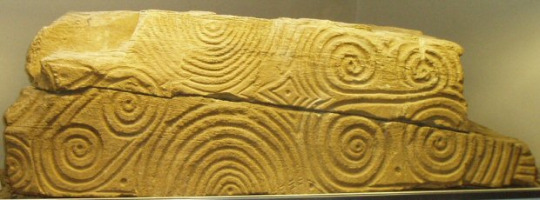

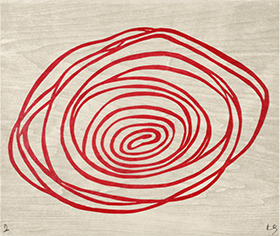


Spirals in art
Fern Ammonite - Liz McGowan (1997) | Red and White Shell - Georgia O'Keeffe (1938) | Spiral Jetty - Robert Smithson (1970) | Snow labyrinth - apulkkan on Flickr | Sculpting the Land: Artistic Interventions with the Landscape - Strijdom van der Merwe (2005) | Spiral detail from The Lindisfarne Gospels (715 - 720) | The Westray Stone, Neolithic era stone carving found in Pierowall Quarry, Orkney, Scotland | Untitled - Andy Goldsworthy | Untitled, no 2 of 12, from series Spirals - Louise Bourgeois, 2006 | 12th century snake mosaic, Church of Saint Adriano di San Demetrio Corone in Calabria, Italy | Snow Drawings - Sonja Hinrichsen (2014) |
#thinking thoughts#art#spirals#andy goldsworthy#louise bourgeois#lindisfarne gospels#georgia o'keeffe#robert smithson#sonja hinrichsen#westray stone#i kind of want a spiral tattoo...
75 notes
·
View notes
Text
The Journey Ends: Durham Cathedral
Images and impressions of one of the world's most magnificent buildings, as my St. Cuthbert pilgrimage ends at Durham Cathedral.
St. Cuthbert’s Cross (late 7th century). This pectoral cross of gold and garnet was found in St. Cuthbert’s coffin in 1827. It was hung around his neck, but whether he wore it in life is uncertain.
This is the third and final part of my pilgrimage account from St. Cuthbert’s Way and beyond. The previous installments can be found at these links:
Walking St. Cuthbert’s Way
Grace and Beauty on…
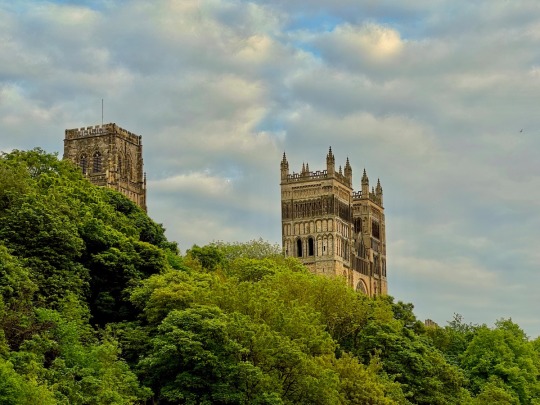
View On WordPress
#Cathedral#Church architecture#Durham Cathedral#Fenwick Lawson#G. K. Chesterton#gate of heaven#Genesis 28:17#Joseph Campbell#Le Corbusier#Lindisfarne Gospels#Michael York#Romanesque architecture#Sacred space#Shswn Kirchner#St. Cuthbert#St. Cuthbert&039;s Way#T. S. Eliot#Venerable Bede
2 notes
·
View notes
Text
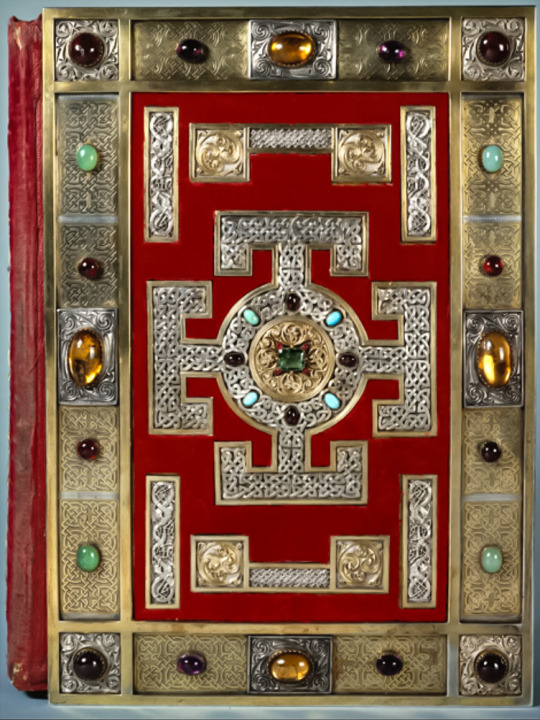
THE LINDISFARNE GOSPELS (c. 700) Modern binding, commissioned in 1852 by Edward Maltby, Bishop of Durham. It is one of the first and greatest masterpieces of medieval European book painting. The Lindisfarne Gospels is described as Insular or Hiberno-Saxon art, a general term for manuscripts produced in the British Isles between 500 and 900 AD.
The story of the Lindisfarne Gospels is intimately connected to life in the north east of England. It speaks to the migration of communities, the passing on of artistic traditions and the preservation of a communal history that resonates with modern-day concerns around identity and belonging.
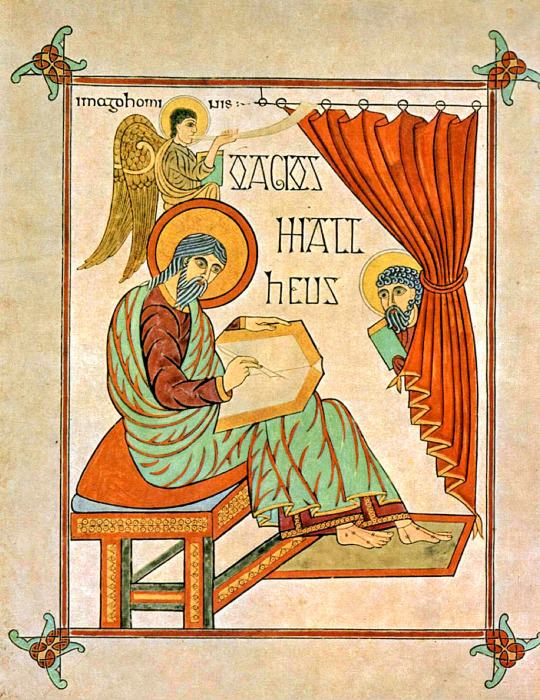

One of the most characteristic styles in the manuscript is the zoomorphic style (adopted from Germanic art) and is revealed through the extensive use of interlaced animal and bird patterns throughout the book. The birds that appear in the manuscript may also have been from Eadfrith's own observations of wildlife in Lindisfarne. The geometric design motifs are also Germanic influence, and appear throughout the manuscript.


The carpet pages (pages of pure decoration) exemplify Eadfrith's use of geometrical ornamentation.



As a part of Anglo-Saxon art the manuscript reveals a love of riddles and surprise, shown through the pattern and interlace in the meticulously designed pages. Many of the patterns used for the Lindisfarne Gospels date back before the Christian period. There is a strong presence of Celtic, Germanic, and Irish art styles. The spiral style and "knot work" evident in the formation of the designed pages are influenced by Celtic art.


source
source2
#beautiful books#book blog#books books books#book cover#books#old books#incunabula#illuminated manuscript#book design#book binding#treasure binding#gospel#lindisfarne#carpet pages
89 notes
·
View notes
Photo
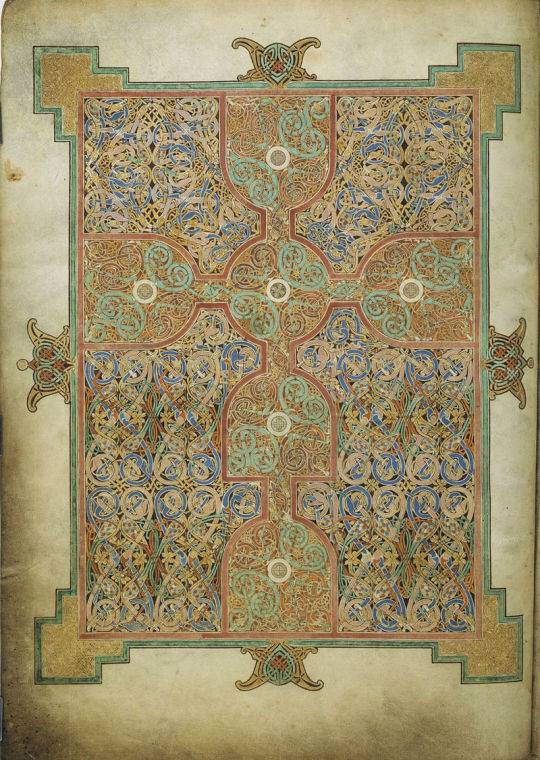
Lindisfarne Gospel Carpet Page F26v, 715-720
British Library, London, England
#art#art history#medieval art#illluminated manscript#manuscript#lindisfarne gospel#hiberno-saxon#cross#christian#christianity#religious art#british library#london#england
53 notes
·
View notes
Text

Folio 27r from the Lindisfarne Gospels, incipit to the Gospel of Matthew.
The main text contains the first sentence of the Gospel: “Liber generationis Iesu Christi filii David filii Abraham” (“The book of the generation of Jesus Christ, the son of David, the son of Abraham”).
The first line contains the word “liber” (“the book”) with illuminated letters in insular majuscule; the first three letters (“lib”) are much more ornate than the last two (“er”) in white.
The next two lines are in runic capitals (i.e. Latin letters in a rune-inspired script, also seen in the Book of Nunnaminster for example): the first of these lines partially contains the word “generationis” as “-onis” appears in the next line, followed by the contracted form of “Iesu”, namely “Ihu” with a tilde on the “h”; this type of contraction is called a nomen sacrum.
The last line is in insular majuscule and begins with another nomen sacrum, the contraction “χρi” with a tilde, meaning “Christi”. This is followed by a more compressed series of words. The first is “filii” (“son”) with an “fi” ligature and a letter “l” with two stacked “i” letters on its leg. Then “David” is seen and is formed with a letter “d” with an “a” stacked on a “v” in its counter followed by “id”. After that, “filii” is present again, however this time the “fi” ligature is replaced with the Greek letter phi (φ) due to its phonetic similarity. The last word is “Abraham”, which is split into two lines.
#lindisfarne#manuscript#illumination#illuminated manuscript#bible#gospel of matthew#calligraphy#latin#insular
4 notes
·
View notes
Text
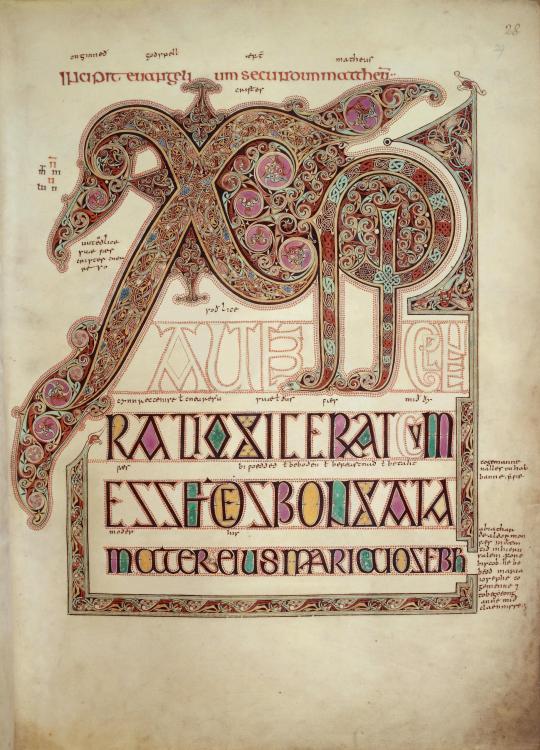
14 notes
·
View notes
Note
you irish?
no i'm just drawn that way
#actually i'm not sure i am i think my profile pic might be an english manuscript#i cannot now remember what manuscript it is from#anyway no i am from england although i have lived in ireland#edit: it's book of kells we're good the joke still works#i thought it might be lindisfarne gospels but i think that was my old one
10 notes
·
View notes
Text
#Books The Lindisfarne Gospels: Collection in Focus | British Library
https://stratford-upon-avon-theatre.blogspot.com/2022/11/books-lindisfarne-gospels-collection-in.html
0 notes
Text

Happy St. Patrick's Day tomorrow! Everyone is Irish on St. Paddy's (except for St. Patrick, who was Welsh) :D
82 notes
·
View notes
Text
A note for readers of Wildfell Weekly (as well as others): the book that Gilbert buys for Helen Graham, Marmion by Sir Walter Scott, appears to have been extremely popular in its time; it is mentioned by characters in several other famous novels of the 1800s.
St. John Rivers buys it for Jane in Jane Eyre:
“I have brought you a book for evening solace,” and he laid on the table a new publication—a poem: one of those genuine productions so often vouchsafed to the fortunate public of those days—the golden age of modern literature. Alas! the readers of our era are less favoured.”
…While I was eagerly glancing at the bright pages of “Marmion” (for “Marmion” it was)…
…I had closed my shutter, laid a mat to the door to prevent the snow from blowing in under it, trimmed my fire, and after sitting nearly an hour on the hearth listening to the muffled fury of the tempest, I lit a candle, took down “Marmion,” and beginning—
“Day set on Norham’s castled steep,
And Tweed’s fair river broad and deep,
And Cheviot’s mountains lone;
The massive towers, the donjon keep,
The flanking walls that round them sweep,
In yellow lustre shone”—
I soon forgot storm in music.
It is also mentioned by Mina in Dracula (though she, or Stoker, makes a small error - the scene mentioned involves characters from Whitby Abbey, but occurs in Lindisfarne, a tidal island that was also, long ago, the home of the illuminated Lindisfarne Gospels):
Right over the town is the ruin of Whitby Abbey, which was sacked by the Danes, and which is the scene of part of “Marmion,” where the girl was built up in the wall.
The book is a poetic epic set at the time of the Battle of Flodden Field (1513); I like the poetry a great deal, and the plot is nicely dramatic and Romantic, despite values dissonance (I do not find the title character as sympathetic as Scott does).
All this is to say - would people be interested in reading this story beloved by so many of our favourite characters? I could put it together as a Substack newsletter and email it out a little a day (probably for a few months total) starting in the new year. It’s not long (about 150 pages), it’s a good read with excellent poetic cadences and lots of high drama and imagery, and it gives a sense of what was popular among people who enjoyed the Gothic and Romantic.
#wildfell weekly#jane eyre#dracula#dracula daily#mina murray#the tenant of wildfell hall#marmion#sir walter scott
57 notes
·
View notes
Text
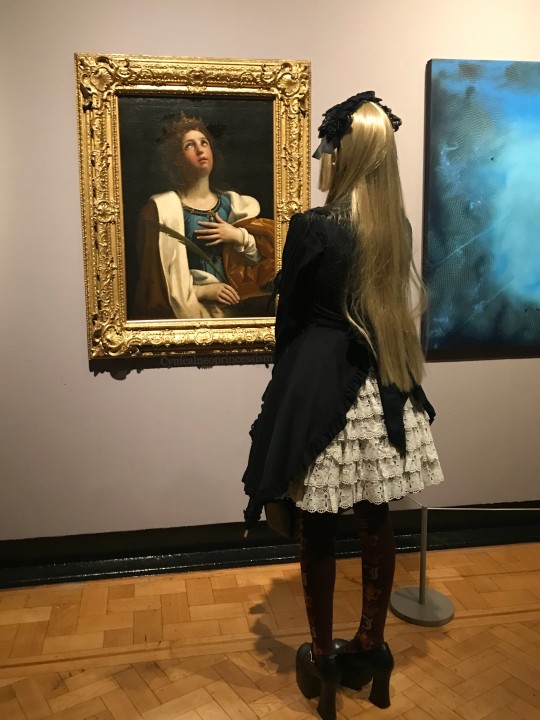


Some nice candid photos (& a selfie) of this coord, when I went to see the Lindisfarne Gospels at an art gallery. Coord rundown on my blog~
Cynical Neo Princessism
#oldschool lolita#old school lolita#gothic lolita#elegant gothic lolita#egl#egl fashion#lolita fashion#jfashion#me#ok to reblog
123 notes
·
View notes
Text
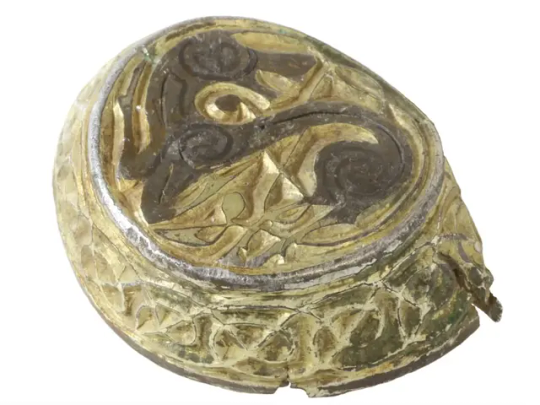
This 1,200-Year-Old Silver Artifact Is Stunning and Nobody Knows What It Is
The intricately decorated silver object was likely created by a highly skilled craftsperson in England
Metal detectorists have unearthed a tiny trinket covered in beautiful, intricate designs in Norfolk, England. The 1,200-year-old gilded silver artifact was likely created by skilled workers, but its purpose remains a mystery.
The strange object is about three-quarters of an inch in diameter. Found near the village of Langham, it resembles a small, crumpled cap. It’s adorned with tactile patterns and the image of an animal resembling a horse.
The artifact captivated historian Helen Geake, Norfolk’s finds liaison officer, reports BBC News’ Katy Prickett.
“It’s so tiny, and yet it was created just as carefully as something like a Bible or piece of jewelry,” says Geake, who has also appeared as an expert on the archaeology television show “Time Team.”
Based on the object’s complicated design, Geake infers that its craftsperson was “multi-talented and doing lots of different things.” The creator likely mixed imported Spanish mercury with powdered gold to create a gilding liquid, not unlike the paints used in illuminated manuscripts—handwritten books adorned with metallics and colorful drawings—made around the same time.
Geake recognizes the spiral pattern on the object’s sides from two illuminated manuscripts, both containing the four gospels of the New Testament: the 1,200-year-old Book of Kells and the 1,300-year-old Lindisfarne Gospel.
The newly discovered artifact dates to the late eighth or early ninth century. Its dominant motif, the animal carved and delicately painted on its top, could be a horse with its head turned backward, says Geake. Outlined by gold, the horse is dark brown, with dark swirling lines drawn through its body. Its face is shown in profile, with one eye visible.
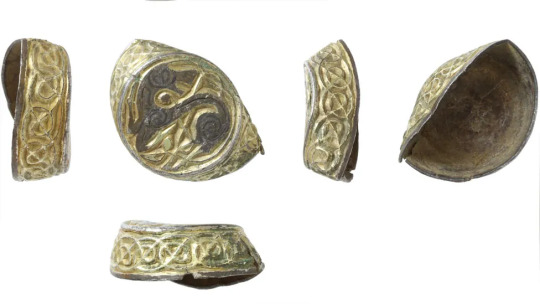
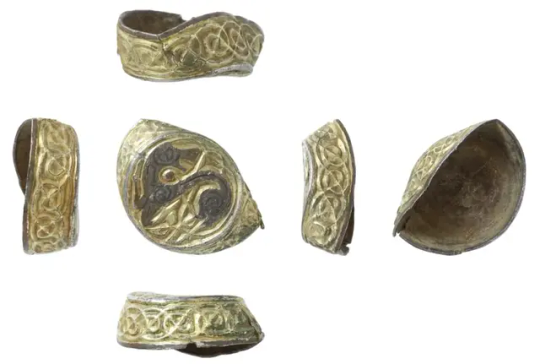
“I love its color,” she tells BBC News. “A lot of the time, we don’t see the colors of the past because clothes don’t survive and enamels drop out of settings.”
The expensive materials and highly detailed artisanship suggest the object was treasured, perhaps serving a meaningful personal or religious purpose, writes the Telegraph’s Craig Simpson. One possibility, Geake suggests, is that it was once a decorative cap on the end of a staff.
Archaeological discoveries are “consistently churned up from the Norfolk soil,” according to the Telegraph. In 2022, the county reported the most treasure finds of any area in the United Kingdom.
Though many curious objects have been discovered in Norfolk, Geake says the gilded cap is “completely unlike” any other find. BBC News reports that it has been declared a treasure, and the local Norwich Castle Museum expressed interest in acquiring it, despite its unknown purpose.
“It’s a mysterious object, and you can’t say what kind of thing it’s off at all,” Geake adds. “But it was made by someone with a real eye for loveliness.”
By Sonja Anderson.


#This 1200-Year-Old Silver Artifact Is Stunning and Nobody Knows What It Is#silver#silver jewelry#silver artifact#ancient artifacts#metal detecting#archeology#archeolgst#history news#ancient history#ancient culture#ancient civilizations#ancient art
23 notes
·
View notes
Photo
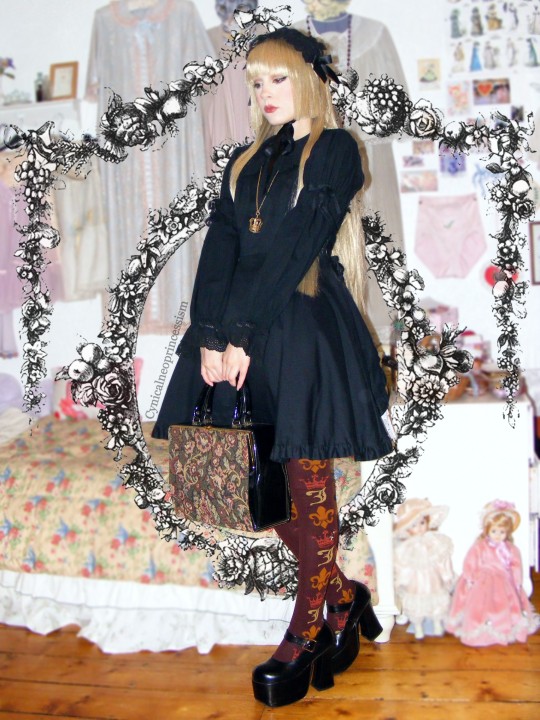
A coord I wore in early December to see the Lindisfarne Gospels. Check out my blog post if you want to see more photos or my coord rundown~
CYNICAL NEO PRINCESSISM
#oldschool lolita#gothic lolita#lolita fashion#elegant gothic lolita#egl#egl fashion#old school lolita
191 notes
·
View notes
Text
taking a medieval manuscripts class and discussing the lindisfarne gospels in depth all while thinking they don't even know my best friend athelstan did these
#when prof first said lindisfarne i think my jaw dropped#blorbo what are you doing here#vikings#athelstan#ragnar lothbrok
9 notes
·
View notes
Text
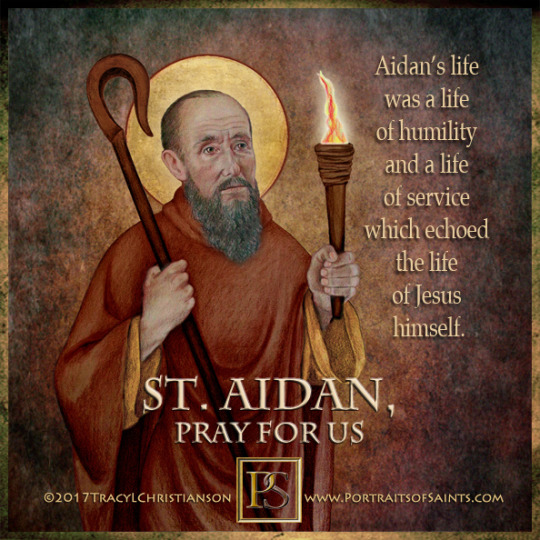
Saint Aidan of Lindisfarne
590 - 651
Feast day: August 31
Patronage: Northumbria, firefighters
Aidan of Lindisfarne was an Irish monk and missionary credited with restoring Christianity to Northumbria. He founded a monastic cathedral on the island of Lindisfarne, served as its first bishop, and traveled ceaselessly throughout the countryside, spreading the gospel to both the Anglo-Saxon nobility and to the socially disenfranchised (including children and slaves).
Prints, plaques & holy cards available for purchase here: (website)
23 notes
·
View notes
Text
Illuminated notes
Calligraphy and illumination were important elements of medieval manuscripts, and they can still inspire and enhance contemporary art and design. Here are a few examples of calligraphy and illumination from medieval manuscripts, along with some tips for incorporating these techniques into your own work:
The Book of Kells: The Book of Kells is an illuminated manuscript created in the late VIII or early IX century in Ireland. It is known for its intricate calligraphy and colorful illustrations of animals, people, and religious scenes. To incorporate this style into your own work, try using a fine-tipped pen or brush to create elaborate lettering with Celtic knotwork and spirals, and add colorful illustrations in a similar style.

The Lindisfarne Gospels: The Lindisfarne Gospels is an illuminated manuscript created in the early VIII century in England. It features a combination of Celtic, Anglo-Saxon, and Mediterranean styles, and is known for its ornate lettering, intricate borders, and vibrant colors. To incorporate this style into your own work, try using bright, bold colors and intricate patterns in your lettering and borders, and experiment with different types of illumination, such as gold leaf or silver paint.

The Très Riches Heures du Duc de Berry: The Très Riches Heures is an illuminated manuscript created in the early XV century in France. It features intricate borders, delicate illustrations, and ornate calligraphy in both French and Latin. To incorporate this style into your own work, try using delicate, flowing lines and intricate patterns in your lettering and borders, and experiment with different types of illumination, such as watercolor or gouache.

Overall, the key to incorporating calligraphy and illumination into your own work is to experiment with different styles, colors, and techniques until you find a style that feels authentic to you. Don't be afraid to make mistakes or try new things, and always keep practicing to improve your skills! Also, there's a great playlist on YouTube full of useful info on techniques and how to illuminate manuscripts.
30 notes
·
View notes